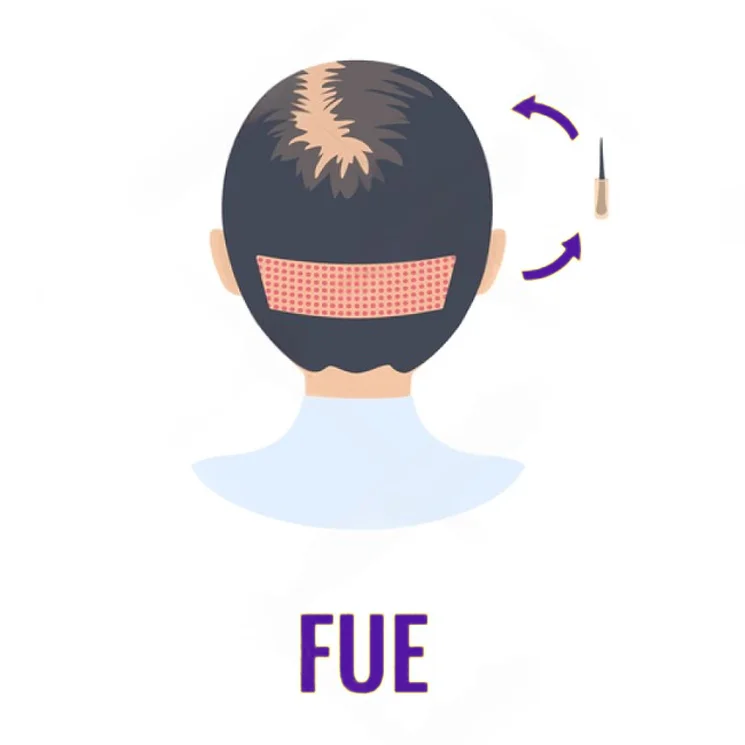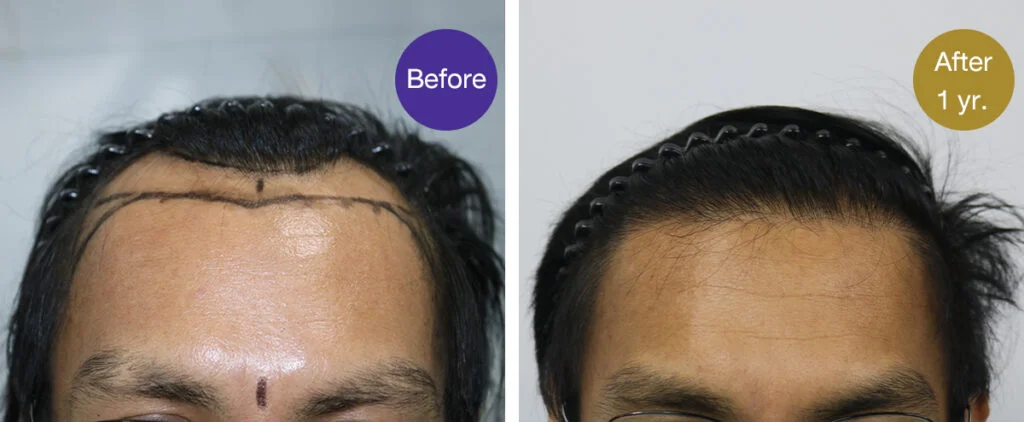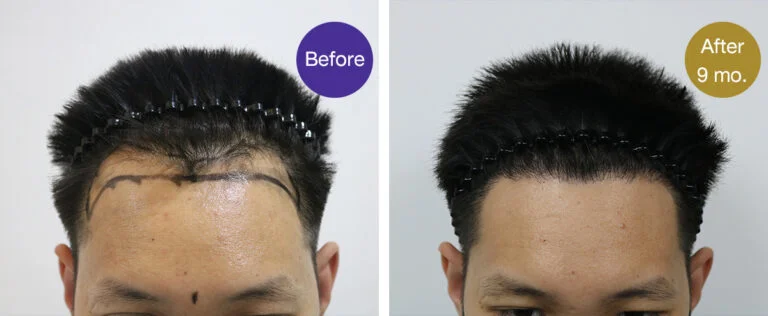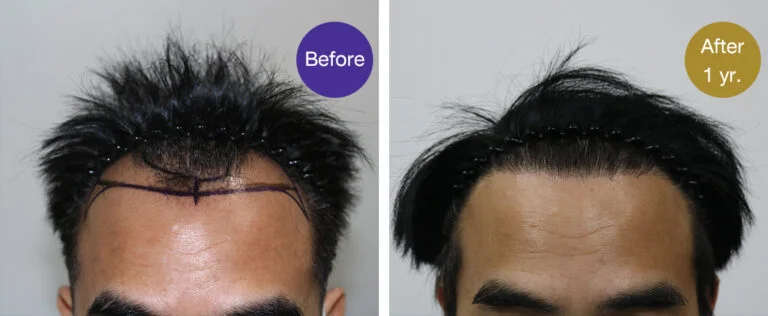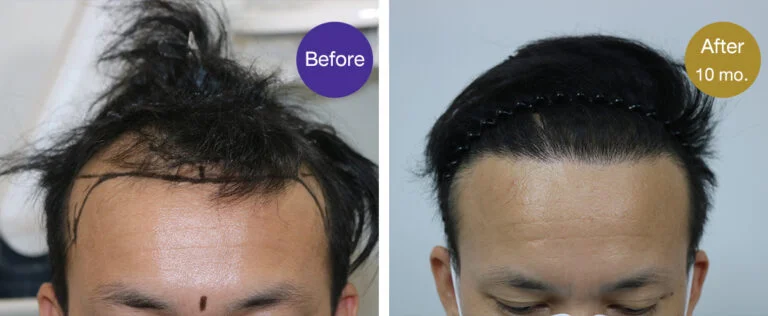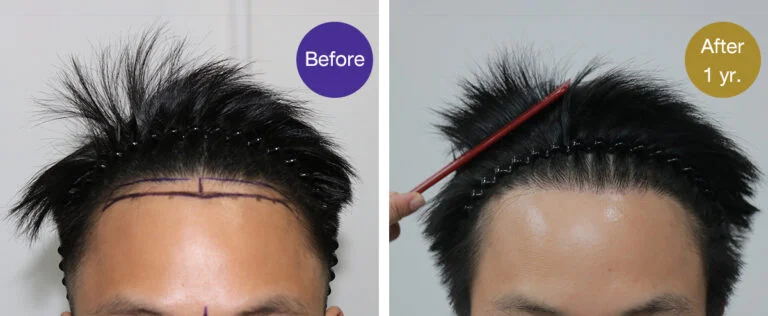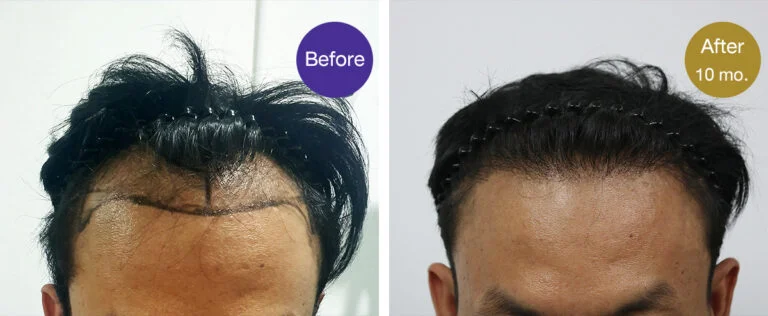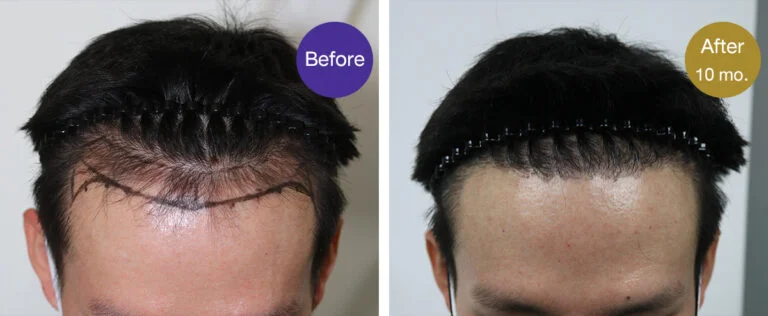Advanced FUE Hair Transplant at WIH Hospital
Experience the forefront of hair restoration with Follicular Unit Extraction (FUE) hair transplant at WIH Hospital in Bangkok, Thailand. Hair loss can significantly impact self-esteem, but our advanced FUE technique offers a minimally invasive, highly effective solution to reclaim a natural-looking, fuller head of hair.
What is FUE Hair Transplant?
Follicular Unit Extraction (FUE) is an advanced, minimally invasive hair transplant technique where individual hair follicular units are extracted directly from a donor area (typically the back or sides of the scalp, which are more resistant to balding) using a specialized micro-punch instrument.
The FUE Hair Transplant Procedure and Surgical Technique
Consultation and Planning
- Initial Evaluation: You can often start with a free evaluation by sending photos of your scalp (front, sides, top, back) to info@wihhospital.com. Our team will assess your hair loss pattern and provide an initial graft estimate.
- Detailed assessment of your hair loss, donor area capacity, and discussion of your aesthetic goals.
- Hairline design and marking of the recipient areas.
Preparation
- The donor area of your scalp is typically trimmed short to allow for clear visibility and access to individual follicular units.
Follicular Unit Extraction (Harvesting)
- Using a micro-punch instrument, the surgeon carefully extracts follicular units from the donor area.
- The harvested grafts are immediately preserved in a custom temperature-controlled system that maintains a stable temperature of 4–8 °C for up to 4–6 This precise temperature control is vital for preserving graft viability and preventing cellular damage.
Recipient Site Creation
- The recipient area (balding or thinning areas) is numbed with local anesthesia (often using tumescent fluid).
- The surgeon makes tiny, precise incisions (recipient sites) in the balding or thinning areas, paying close attention to the angle, direction, and density required to mimic natural hair growth patterns.
Graft Implantation
- The individual follicular units are artistically placed into the recipient sites.
- Typically, 1-hair grafts are placed along the very front of the hairline for a soft, natural transition.
- 2-hair and 3-4 hair grafts are placed behind the hairline to create density and volume.


